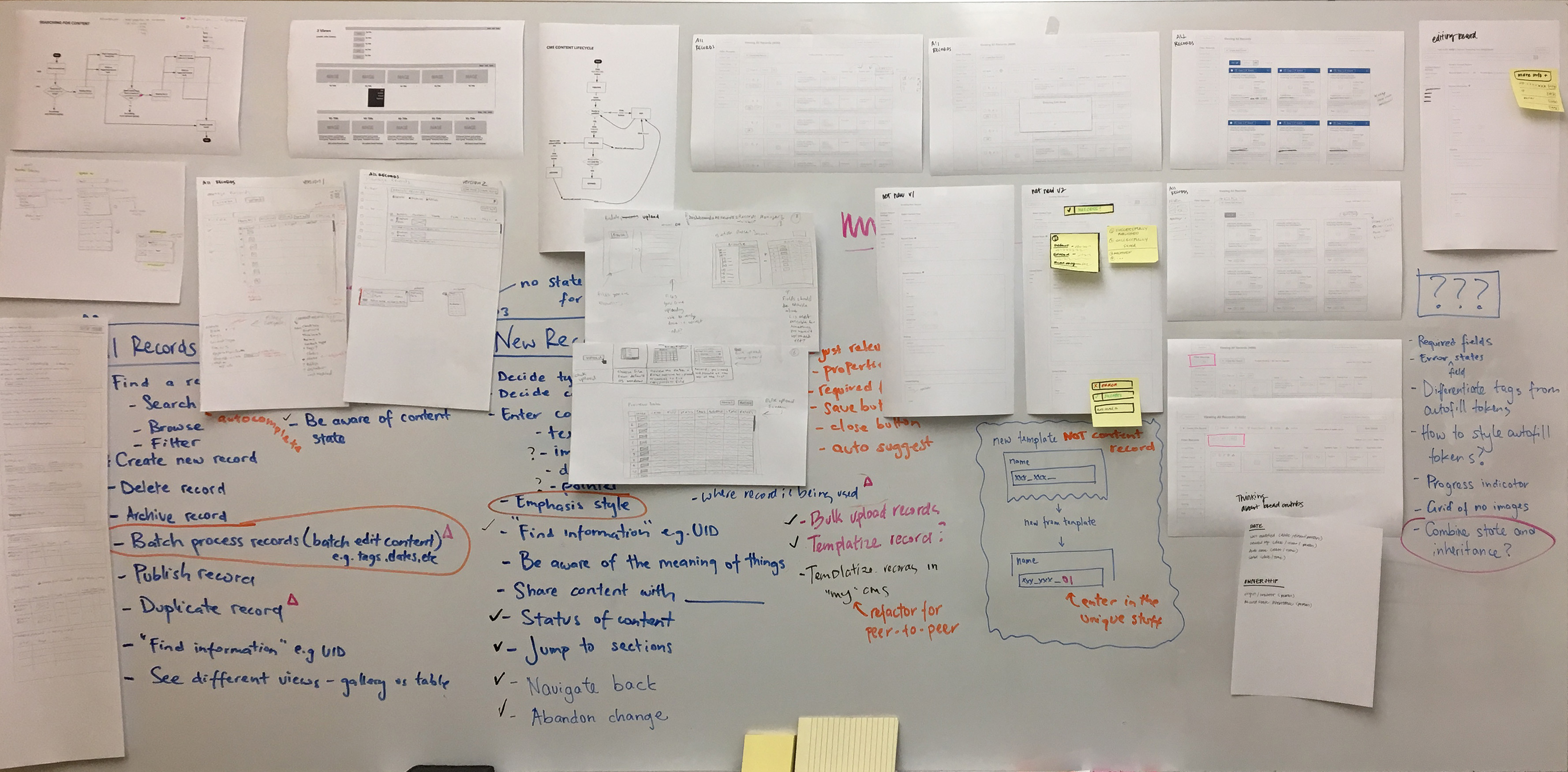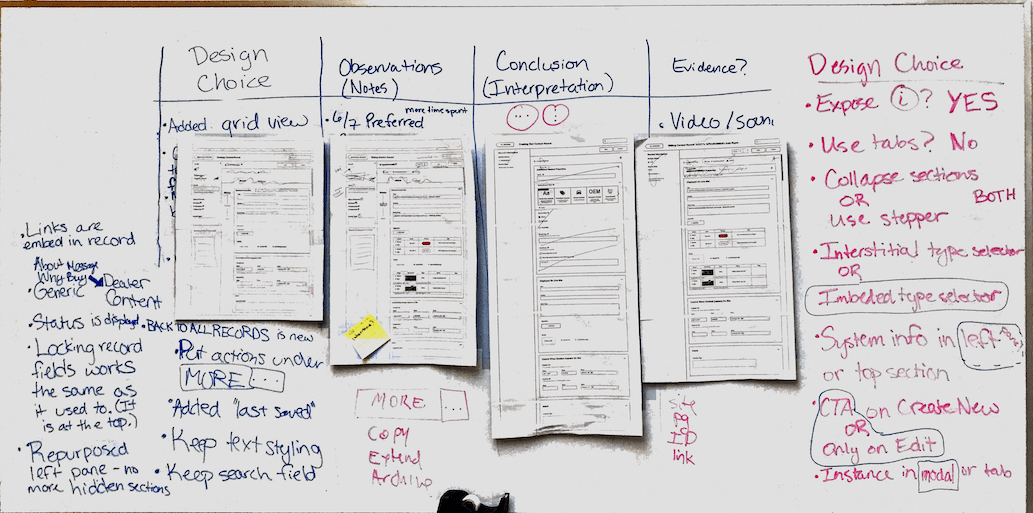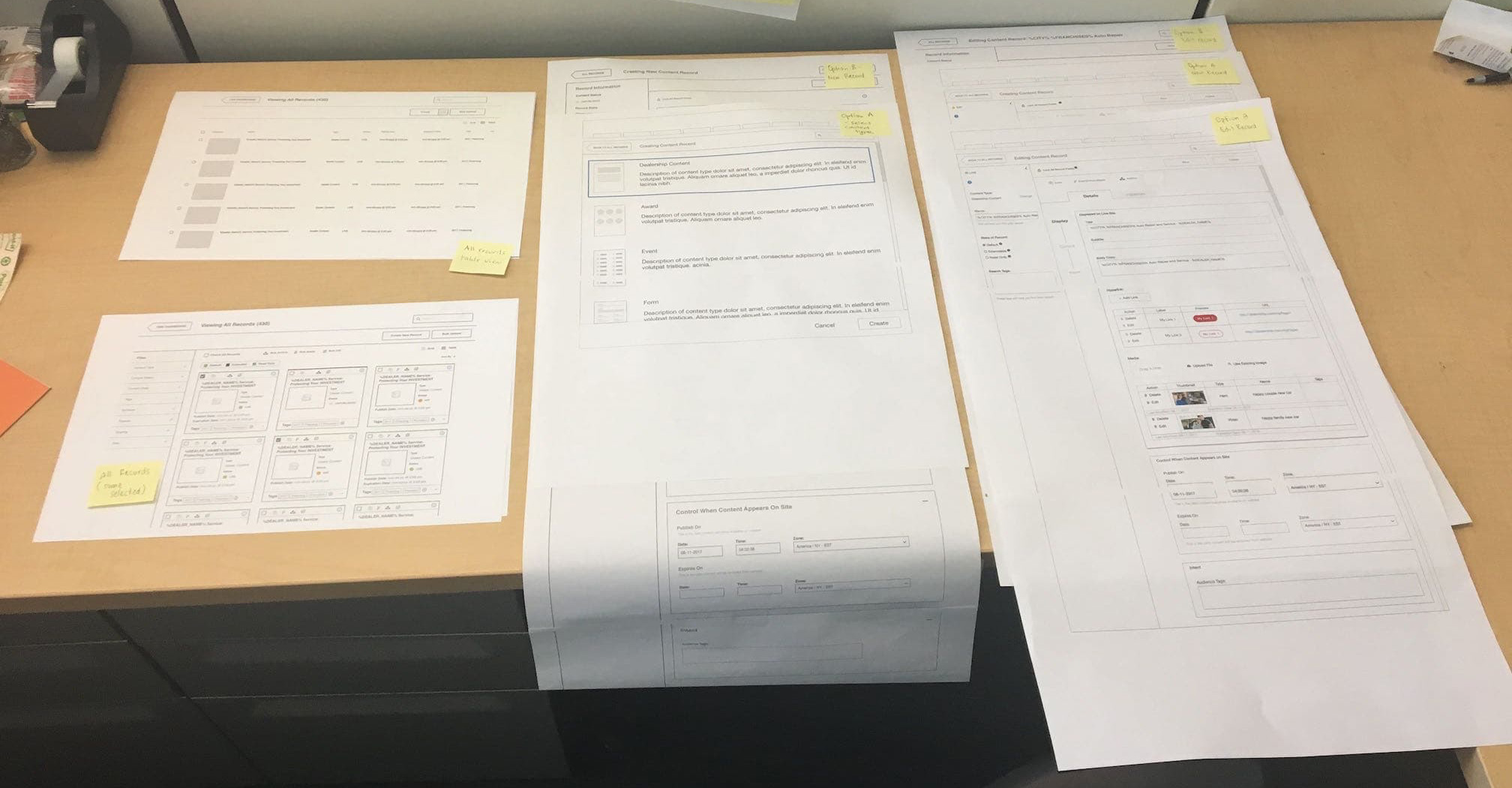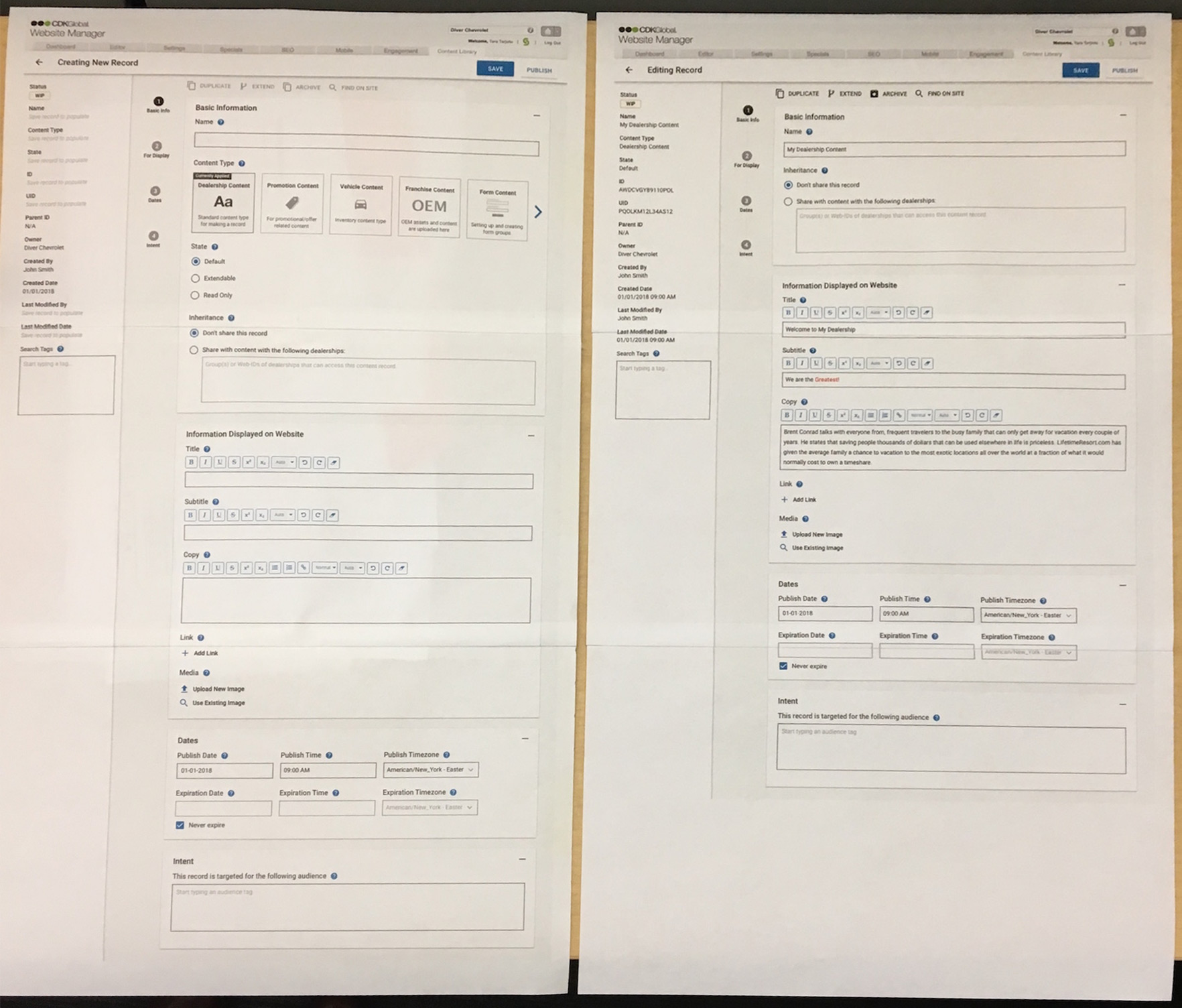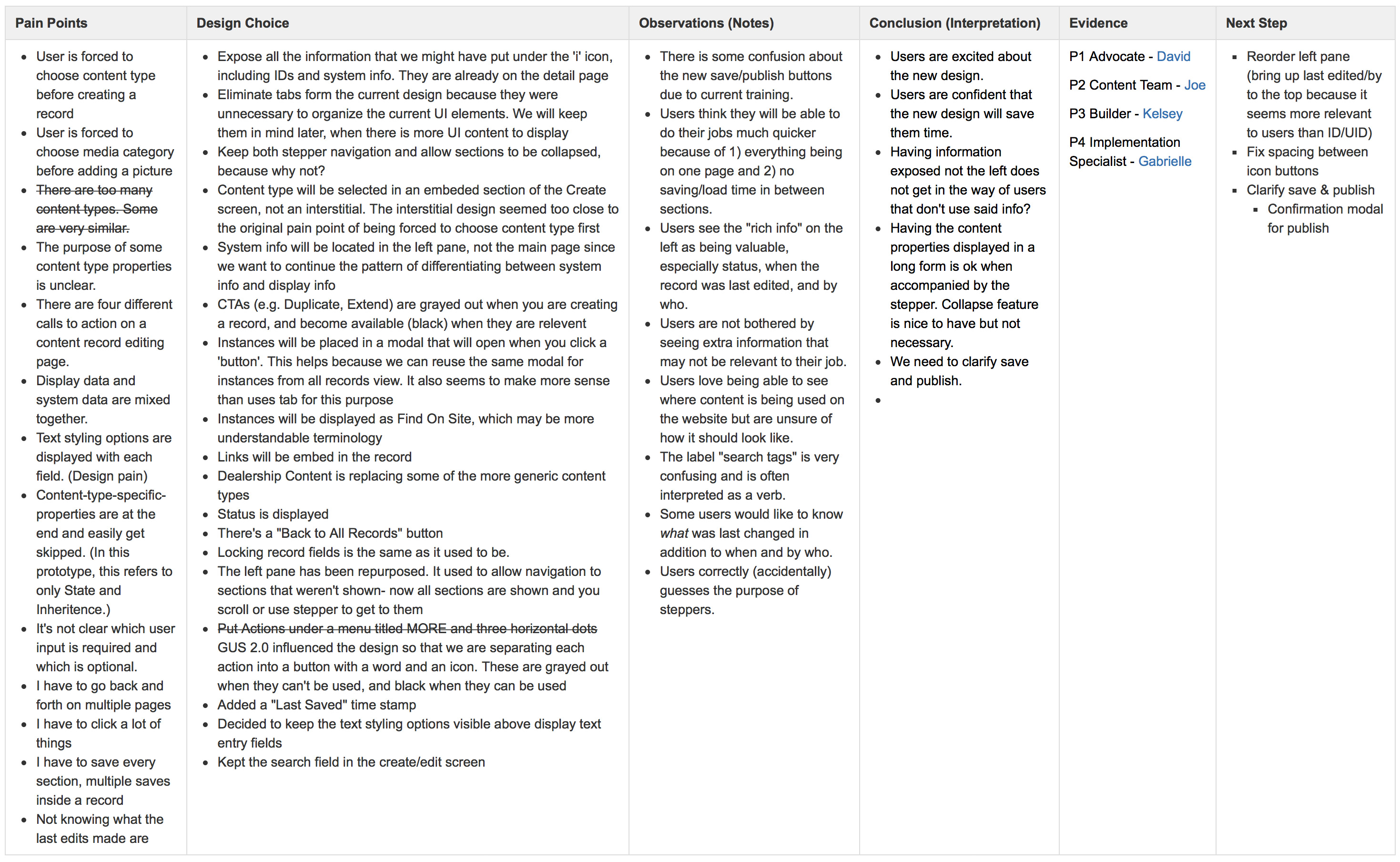
Next Gen Content Library CRUD Redesign
Historically, only Product, Engineering, and Services organizations are involved in determining which projects make it onto the product roadmap. Designers are often engaged only when it comes time to act upon a project. As lead UX designer, I felt it was very important to build trust between cross-functional teams and to advocate for my organization.
This project was the first of a series modeled after GV’s Design Sprint completed over 6+ months as part of a collaborative effort to implement a more rigorous user-centered design and testing process for the Websites team at CDK. I was responsible for arranging and facilitating the sprint. My tasks include distilling and articulating the problem, and keeping discussion on track, along with prototyping, testing and supporting the long tail. I was also the subject matter expert for Next Gen. Core participants were myself, two designers, a researcher, the product owner, and the lead developer.
Process Improvements, Design Sprint, Rapid Prototyping, User Testing

